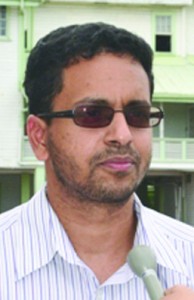E-governance Project Director Alexei Ramotar said the development of a strong Information Communication Technology (ICT) infrastructure can work to eliminate inefficiencies within traditional sectors and has the potential to become an important avenue for economic development.
Ramotar noted that not only does ICT act to remove the weaknesses of traditional sectors, but also in itself, it has become an important part of the services sector; creating jobs from small single-entity businesses to large firms.
“With a general trend in Guyana of young people being trained and looking for high- skilled, non-traditional professions, ICT opens a new avenue,” the project head said.




